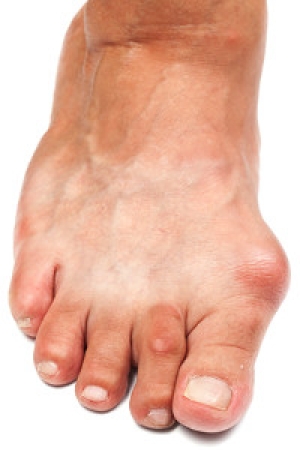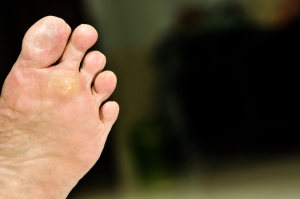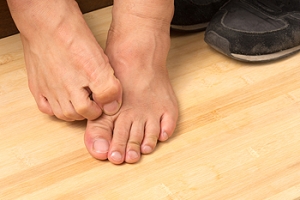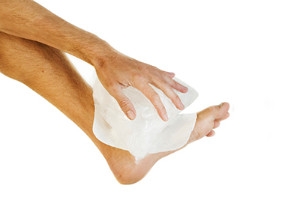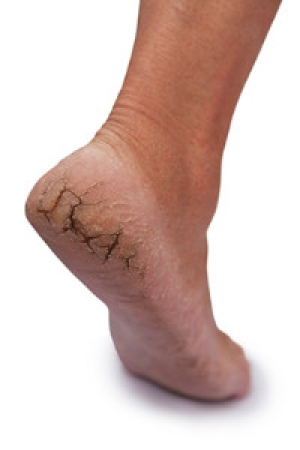
Diabetes and Foot Care
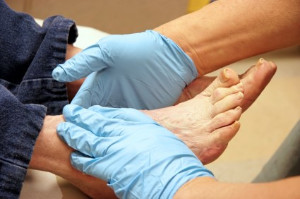 While the relationship between diabetes and the feet may not seem important to most people, it is of utmost concern. Diabetics generally suffer from poor blood circulation and neuropathy, or nerve loss. Due to the loss of sensation associated with neuropathy, diabetics may not realize when they have a foot ulcer. The wound may also become infected due to the poor blood circulation and improper healing. Amputations are not uncommon because of diabetes, and awareness of this issue is vital to those who have the condition. Diabetics should inspect their feet daily for wounds, splinters, or any abnormalities. If you have diabetes, avoid going barefoot and wear well-cushioned footwear that provides optimal foot support and wiggle room for the toes. Finally, it is highly recommended to see a podiatrist for a foot examination at least once a year.
While the relationship between diabetes and the feet may not seem important to most people, it is of utmost concern. Diabetics generally suffer from poor blood circulation and neuropathy, or nerve loss. Due to the loss of sensation associated with neuropathy, diabetics may not realize when they have a foot ulcer. The wound may also become infected due to the poor blood circulation and improper healing. Amputations are not uncommon because of diabetes, and awareness of this issue is vital to those who have the condition. Diabetics should inspect their feet daily for wounds, splinters, or any abnormalities. If you have diabetes, avoid going barefoot and wear well-cushioned footwear that provides optimal foot support and wiggle room for the toes. Finally, it is highly recommended to see a podiatrist for a foot examination at least once a year.
Diabetic foot care is important in preventing foot ailments such as ulcers. If you are suffering from diabetes or have any other concerns about your feet, contact one of our podiatrists from Pennsylvania. Our doctors can provide the care you need to keep you pain-free and on your feet.
Diabetic Foot Care
Diabetes affects millions of people every year. The condition can damage blood vessels in many parts of the body, especially the feet. Because of this, taking care of your feet is essential if you have diabetes, and having a podiatrist help monitor your foot health is highly recommended.
The Importance of Caring for Your Feet
- Routinely inspect your feet for bruises or sores.
- Wear socks that fit your feet comfortably.
- Wear comfortable shoes that provide adequate support.
Patients with diabetes should have their doctor monitor their blood levels, as blood sugar levels play such a huge role in diabetic care. Monitoring these levels on a regular basis is highly advised.
It is always best to inform your healthcare professional of any concerns you may have regarding your feet, especially for diabetic patients. Early treatment and routine foot examinations are keys to maintaining proper health, especially because severe complications can arise if proper treatment is not applied.
If you have any questions please feel free to contact one of our offices located in Plymouth Meeting and Ambler, PA . We offer the newest diagnostic and treatment technologies for all your foot and ankle needs.
Picking Footwear for Women
 Choosing the right type of footwear for women can be difficult. High heels can exacerbate a number of foot-related issues such as bunions, plantar fasciitis, and ingrown toenails. Flats, on the other hand, don’t provide enough support for the foot. Knowing what to look for in a shoe can save you from a number of foot problems. Throughout the day, your feet tend to increase in size; with this in mind, it is recommended to buy shoes later in the day when the feet are largest. If a pair of shoes you want don’t offer arch support, try orthotic inserts to make them more comfortable and appropriate for your feet. Knowing what shoes to wear for specific occasions is important. Athletic shoes generally provide great comfort and support and are a good choice for everyday activities. When wearing high heels or flats, try not to wear them for more than two hours. Finally, make sure that the shoes you purchase aren’t too pointy for the toes. Shoes that allow the toes to wiggle around are recommended.
Choosing the right type of footwear for women can be difficult. High heels can exacerbate a number of foot-related issues such as bunions, plantar fasciitis, and ingrown toenails. Flats, on the other hand, don’t provide enough support for the foot. Knowing what to look for in a shoe can save you from a number of foot problems. Throughout the day, your feet tend to increase in size; with this in mind, it is recommended to buy shoes later in the day when the feet are largest. If a pair of shoes you want don’t offer arch support, try orthotic inserts to make them more comfortable and appropriate for your feet. Knowing what shoes to wear for specific occasions is important. Athletic shoes generally provide great comfort and support and are a good choice for everyday activities. When wearing high heels or flats, try not to wear them for more than two hours. Finally, make sure that the shoes you purchase aren’t too pointy for the toes. Shoes that allow the toes to wiggle around are recommended.
Getting the right shoe size is an important part of proper foot health. Seek the assistance of one of our podiatrists from Pennsylvania. Our doctors will provide the care you need to keep you pain-free and on your feet.
Getting the Right Shoe Size
There are many people who wear shoes that are the incorrect size, negatively affecting their feet and posture. Selecting the right shoes is not a difficult process, so long as you keep several things in mind when it comes to choosing the right pair.
- When visiting the shoe store, use the tools available to measure your foot.
- Be sure there is ‘wiggle room’. There should be about an inch between your toes and the tip of your shoes.
- Do not always assume you are the same size, as manufacturers run differently.
- Purchase shoes later in the day, as your feet swell as the day progresses.
- If a shoe is not comfortable, it is not suitable. Most shoes can’t be ‘broken in’, and comfort should be the ultimate goal when it comes to choosing the right pair of shoes
As our feet hold our body weight and keep us moving, it is important to treat them right. Picking the right pair of shoes can provide your feet comfort and mobility without pain.
If you have any questions, please feel free to contact one of our offices located in Plymouth Meeting and Ambler, PA . We offer the newest diagnostic and treatment technologies for all your foot care needs.
What are Bunions?
 Hallux valgus, better known as bunions, is an enlargement of the inner portion of the joint at the base of the big toe. This can cause pain, tenderness, and redness near the big toe. Movement can worsen the pain, and overtime, the misalignment can become worse. Several conditions have been linked to bunions, with genetics playing a role as well. These include flat feet, obesity, abnormal bone structures, and overly flexible ligaments. Those of European descent are more likely to suffer from bunions. Shoes that aren’t wide enough and high heels can exacerbate bunions. While not all bunions require surgery, it is important to see a podiatrist first who can observe the severity of the deformation and provide treatment.
Hallux valgus, better known as bunions, is an enlargement of the inner portion of the joint at the base of the big toe. This can cause pain, tenderness, and redness near the big toe. Movement can worsen the pain, and overtime, the misalignment can become worse. Several conditions have been linked to bunions, with genetics playing a role as well. These include flat feet, obesity, abnormal bone structures, and overly flexible ligaments. Those of European descent are more likely to suffer from bunions. Shoes that aren’t wide enough and high heels can exacerbate bunions. While not all bunions require surgery, it is important to see a podiatrist first who can observe the severity of the deformation and provide treatment.
If you are suffering from bunions, contact one of our podiatrists of Pennsylvania. Our doctors can provide the care you need to keep you pain-free and on your feet.
What Is a Bunion?
A bunion is formed of swollen tissue or an enlargement of boney growth, usually located at the base joint of the toe that connects to the foot. The swelling occurs due to the bones in the big toe shifting inward, which impacts the other toes of the foot. This causes the area around the base of the big toe to become inflamed and painful.
Why Do Bunions Form?
Genetics – Susceptibility to bunions are often hereditary
Stress on the feet – Poorly fitted and uncomfortable footwear that places stress on feet, such as heels, can worsen existing bunions
How Are Bunions Diagnosed?
Doctors often perform two tests – blood tests and x-rays – when trying to diagnose bunions, especially in the early stages of development. Blood tests help determine if the foot pain is being caused by something else, such as arthritis, while x-rays provide a clear picture of your bone structure to your doctor.
How Are Bunions Treated?
- Refrain from wearing heels or similar shoes that cause discomfort
- Select wider shoes that can provide more comfort and reduce pain
- Anti-inflammatory and pain management drugs
- Orthotics or foot inserts
- Surgery
If you have any questions, please feel free to contact one of our offices located in Plymouth Meeting and Ambler, PA . We offer the newest diagnostic and treatment technologies for all your foot care needs.
LA Dodgers’ Cody Bellinger Sprains Right Ankle
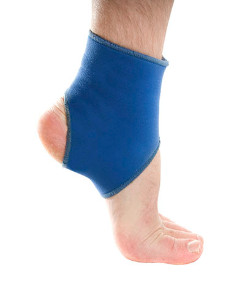 Los Angeles Dodgers’ Cody Bellinger sprained his right ankle in a game against the Detroit Tigers. The rookie first baseman and outfielder sustained the injury while going for a catch. Fortunately, the sprain is said to only be a mild one. He will be removed from the lineup until he heals, which should not be long. Bellinger described the injury as being slightly swollen, but said he is otherwise feeling well. He is considered to be one of the Dodgers’ best players and has the potential to win the National League’s Rookie of the Year award.
Los Angeles Dodgers’ Cody Bellinger sprained his right ankle in a game against the Detroit Tigers. The rookie first baseman and outfielder sustained the injury while going for a catch. Fortunately, the sprain is said to only be a mild one. He will be removed from the lineup until he heals, which should not be long. Bellinger described the injury as being slightly swollen, but said he is otherwise feeling well. He is considered to be one of the Dodgers’ best players and has the potential to win the National League’s Rookie of the Year award.
Sports related foot and ankle injuries require proper treatment before players can go back to their regular routines. For more information, contact one of our podiatrists of Pennsylvania. Our doctors can provide the care you need to keep you pain-free and on your feet.
Sports Related Foot and Ankle Injuries
Foot and ankle injuries are a common occurrence when it comes to athletes of any sport. While many athletes dismiss the initial aches and pains, the truth is that ignoring potential foot and ankle injuries can lead to serious problems. As athletes continue to place pressure and strain the area further, a mild injury can turn into something as serious as a rupture and may lead to a permanent disability. There are many factors that contribute to sports related foot and ankle injuries, which include failure to warm up properly, not providing support or wearing bad footwear. Common injuries and conditions athletes face, including:
- Plantar Fasciitis
- Plantar Fasciosis
- Achilles Tendinitis
- Achilles Tendon Rupture
- Ankle Sprains
Sports related injuries are commonly treated using the RICE method. This includes rest, applying ice to the injured area, compression and elevating the ankle. More serious sprains and injuries may require surgery, which could include arthroscopic and reconstructive surgery. Rehabilitation and therapy may also be required in order to get any recovering athlete to become fully functional again. Any unusual aches and pains an athlete sustains must be evaluated by a licensed, reputable medical professional.
If you have any questions please feel free to contact one of our offices located in Plymouth Meeting and Ambler, PA . We offer the newest diagnostic and treatment technologies for all your foot and ankle needs.
How to Avoid Getting Plantar Warts
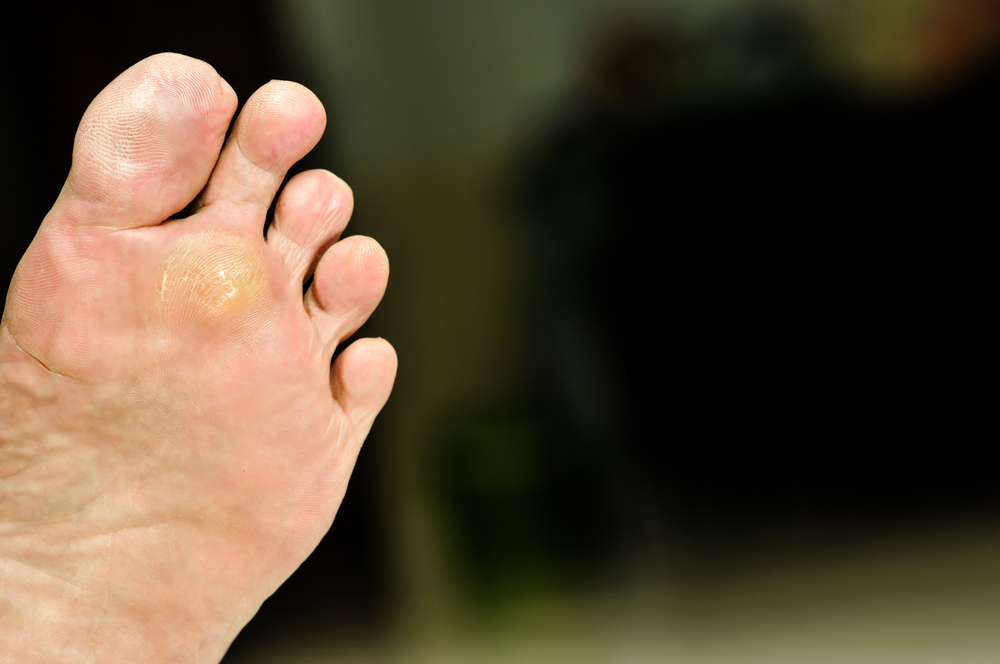 Plantar warts are growths that appear on the feet, especially on the heels. These warts are caused by human papillomavirus (HPV) which enters the body through small cuts or wounds. If you develop a plantar wart and do not treat it, it can become larger and spread to other areas. In order to avoid getting these warts, you should avoid going barefoot in public areas such as locker rooms or dressing rooms. Additionally, make sure you are always wearing clean and dry socks since the virus tends to like hot and humid areas. The inside of a shoe with a sweaty foot is an ideal place for the virus to be.
Plantar warts are growths that appear on the feet, especially on the heels. These warts are caused by human papillomavirus (HPV) which enters the body through small cuts or wounds. If you develop a plantar wart and do not treat it, it can become larger and spread to other areas. In order to avoid getting these warts, you should avoid going barefoot in public areas such as locker rooms or dressing rooms. Additionally, make sure you are always wearing clean and dry socks since the virus tends to like hot and humid areas. The inside of a shoe with a sweaty foot is an ideal place for the virus to be.
Plantar warts can be very uncomfortable. If you need your feet checked, contact one of our podiatrists from Pennsylvania. Our doctors will assist you with all of your foot and ankle needs.
About Plantar Warts
Plantar warts are the result of HPV, or human papillomavirus, getting into open wounds on the feet. They are mostly found on the heels or balls of the feet.
While plantar warts are generally harmless, those experiencing excessive pain or those suffering from diabetes or a compromised immune system require immediate medical care. Plantar warts are easily diagnosed, usually through scraping off a bit of rough skin or by getting a biopsy.
Symptoms
- Lesions on the bottom of your feet, usually rough and grainy
- Hard or thick callused spots
- Wart seeds, which are small clotted blood vessels that look like little black spots
- Pain, discomfort, or tenderness of your feet when walking or standing
Treatment
- Freezing
- Electric tool removal
- Laser Treatment
- Topical Creams (prescription only)
- Over-the-counter medications
To help prevent developing plantar warts, avoid walking barefoot over abrasive surfaces that can cause cuts or wounds for HPV to get into. Avoiding direct contact with other warts, as well as not picking or rubbing existing warts, can help prevent the further spread of plantar warts. However, if you think you have developed plantar warts, speak to your podiatrist. He or she can diagnose the warts on your feet and recommend the appropriate treatment options.
If you have any questions please feel free to contact one of our offices located in Plymouth Meeting and Ambler, PA . We offer the newest diagnostic and treatment technologies for all your foot and ankle needs.
Tips for Stronger and Healthier Feet
 Dancers spend a lot of time on their feet, and it is important that they know how to take care of them in order to prevent injuries. One of the best ways to prevent injury is to wear appropriate shoes that will take the pressure off your feet. If you are looking to maintain strong feet, you can try doing some stretches to improve your stability and strength. Some exercises that you may find helpful are calf muscle stretches and resistance band exercises. Nevertheless, if you suspect that you have any sort of lingering pain in your feet, you should seek help from your podiatrist right away.
Dancers spend a lot of time on their feet, and it is important that they know how to take care of them in order to prevent injuries. One of the best ways to prevent injury is to wear appropriate shoes that will take the pressure off your feet. If you are looking to maintain strong feet, you can try doing some stretches to improve your stability and strength. Some exercises that you may find helpful are calf muscle stretches and resistance band exercises. Nevertheless, if you suspect that you have any sort of lingering pain in your feet, you should seek help from your podiatrist right away.
Everyday foot care is very important to prevent infection and other foot ailments. If you need your feet checked, contact one of our podiatrists from Pennsylvania. Our doctors can provide the care you need to keep you pain-free and on your feet.
Everyday Foot Care
Often, people take care of their bodies, face and hair more so than they do for their feet. But the feet are a very important aspect of our bodies, and one that we should pay more attention to. Without our feet, we would not be able to perform most daily tasks.
It is best to check your feet regularly to make sure there are no new bruises or cuts that you may not have noticed before. For dry feet, moisturizer can easily be a remedy and can be applied as often as necessary to the affected areas. Wearing shoes that fit well can also help you maintain good foot health, as well as making it easier to walk and do daily activities without the stress or pain of ill-fitting shoes, high heels, or even flip flops. Wearing clean socks with closed shoes is important to ensure that sweat and bacteria do not accumulate within the shoe. Clean socks help to prevent Athlete’s foot, fungi problems, bad odors, and can absorb sweat.
If you have any questions please feel free to contact one of our offices located in Plymouth Meeting and Ambler, PA . We offer the newest diagnostic and treatment technologies for all your foot and ankle needs.
The Importance of Podiatrists
 Podiatrists are known for treating and diagnosing conditions in the foot and ankle. In order to become a podiatrist, one has to complete four years of training in podiatry school and three years of hospital training. Some podiatrists specialize in certain areas such as pediatrics, sports injuries, wound care, and diabetic care. It is possible for podiatrists to earn board certification by undergoing advanced training and taking an exam. The two boards that are able to certify podiatrists are the American Board of Foot and Ankle Surgery and the American Board of Podiatric Medicine.
Podiatrists are known for treating and diagnosing conditions in the foot and ankle. In order to become a podiatrist, one has to complete four years of training in podiatry school and three years of hospital training. Some podiatrists specialize in certain areas such as pediatrics, sports injuries, wound care, and diabetic care. It is possible for podiatrists to earn board certification by undergoing advanced training and taking an exam. The two boards that are able to certify podiatrists are the American Board of Foot and Ankle Surgery and the American Board of Podiatric Medicine.
If you are experiencing pain in the feet or ankles, don’t join the stubborn majority refusing treatment. Feel free to contact one of our podiatrists from Pennsylvania. Our doctors can provide the care you need to keep you pain-free and on your feet.
What Is a Podiatrist?
Someone would seek the care of a podiatrist if they have suffered a foot injury or have common foot ailments such as heal spurs, bunions, arch problems, deformities, ingrown toenails, corns, foot and ankle problems, etc.
Podiatric Treatment
A podiatrist will treat the problematic areas of the feet, ankle or lower leg by prescribing the following:
- Physical therapy
- Drugs
- Orthotic inserts or soles
- Surgery on lower extremity fractures
A common podiatric procedure a podiatrist will use is a scanner or force plate which will allow the podiatrist to know the designs of orthotics. Patients are then told to follow a series of tasks to complete the treatment. The computer will scan the foot a see which areas show weight distribution and pressure points. The podiatrist will read the analysis and then determine which treatment plans are available.
If you have any questions please feel free to contact one of our offices located in Plymouth Meeting and Ambler, PA . We offer the newest diagnostic and treatment technologies for all your foot and ankle needs.
The Importance of Having Good Blood Circulation
 Blood circulation is an essential bodily function since it supplies the body’s vital organs with enough oxygen and nutrients needed to operate. Poor blood circulation can potentially harm the heart, kidneys, and brain, and it may even have fatal consequences if left untreated. One of the most common signs of poor circulation is numbness in the hands and feet. This is often the result of compressed nerves, extreme coldness, a lack of magnesium, and vitamin B12 deficiency. Another obvious sign of poor circulation is swelling in the lower extremities. If you notice you have swelling, you should lay down and raise your legs up above your heart. Coldness in the hands and feet is another symptom of poor circulation that should not go unnoticed. A disruption of blood flow prevents the blood from reaching the furthest parts of the body, which are the fingers and toes.
Blood circulation is an essential bodily function since it supplies the body’s vital organs with enough oxygen and nutrients needed to operate. Poor blood circulation can potentially harm the heart, kidneys, and brain, and it may even have fatal consequences if left untreated. One of the most common signs of poor circulation is numbness in the hands and feet. This is often the result of compressed nerves, extreme coldness, a lack of magnesium, and vitamin B12 deficiency. Another obvious sign of poor circulation is swelling in the lower extremities. If you notice you have swelling, you should lay down and raise your legs up above your heart. Coldness in the hands and feet is another symptom of poor circulation that should not go unnoticed. A disruption of blood flow prevents the blood from reaching the furthest parts of the body, which are the fingers and toes.
Poor circulation is a serious condition and needs immediate medical attention. If you have any concerns with poor circulation in your feet contact one of our podiatrists of Pennsylvania. Our doctors will treat your foot and ankle needs.
Poor Circulation in the Feet
Poor blood circulation in the feet and legs is can be caused by peripheral artery disease (PAD), which is the result of a buildup of plaque in the arteries.
Plaque buildup or atherosclerosis results from excess calcium and cholesterol in the bloodstream. This can restrict the amount of blood which can flow through the arteries. Poor blood circulation in the feet and legs are sometimes caused by inflammation in the blood vessels, known as vasculitis.
Causes
Lack of oxygen and oxygen from poor blood circulation restricts muscle growth and development. It can also cause:
- Muscle pain, stiffness, or weakness
- Numbness or cramping in the legs
- Skin discoloration
- Slower nail & hair growth
- Erectile dysfunction
Those who have diabetes or smoke are at greatest risk for poor circulation, as are those who are over 50. If you have poor circulation in the feet and legs it may be caused by PAD and is important to make changes to your lifestyle in order to reduce risk of getting a heart attack or stroke. Exercise and maintaining a healthy lifestyle will dramatically improve conditions.
As always, see a podiatrist as he or she will assist in finding a regimen that suits you. A podiatrist can also prescribe you any needed medication.
If you have any questions please feel free to contact one of our offices located in Plymouth Meeting and Ambler, PA . We offer the newest diagnostic and treatment technologies for all your foot and ankle needs.
Kris Bryant Suffers Ankle Sprain
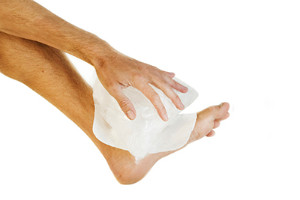 Cubs third baseman Kris Bryant recently suffered an ankle sprain that is expected to keep him out of gameplay for at least one week. It is possible that the Cubs organization will opt to place Bryant on the 10-day disabled list to allow him time to heal and to refill his spot on the active roster. Bryant suffered the injury when he rolled his ankle trying to catch a pop-up in foul territory. In regard to the amount of time he will be sidelined, the third baseman said, “It shouldn’t be too long — I don’t think it should be.”
Cubs third baseman Kris Bryant recently suffered an ankle sprain that is expected to keep him out of gameplay for at least one week. It is possible that the Cubs organization will opt to place Bryant on the 10-day disabled list to allow him time to heal and to refill his spot on the active roster. Bryant suffered the injury when he rolled his ankle trying to catch a pop-up in foul territory. In regard to the amount of time he will be sidelined, the third baseman said, “It shouldn’t be too long — I don’t think it should be.”
Ankle sprains are common but need immediate attention. If you need your feet checked, contact one of our podiatrists from Pennsylvania. Our doctors can provide the care you need to keep you pain-free and on your feet.
How Does an Ankle Sprain Occur?
Ankle sprains take place when the ligaments in your ankle are torn or stretched beyond their limits. There are multiple ways that the ankle can become injured, including twisting or rolling over onto your ankle, putting undue stress on it, or causing trauma to the ankle itself.
What Are the Symptoms?
- Mild to moderate bruising
- Limited mobility
- Swelling
- Discoloration of the skin (depending on severity)
Preventing a Sprain
- Wearing appropriate shoes for the occasion
- Stretching before exercises and sports
- Knowing your limits
Treatment of a Sprain
Treatment of a sprain depends on the severity. Many times, people are told to rest and remain off their feet completely, while others are given an air cast. If the sprain is very severe, surgery may be required.
If you have suffered an ankle sprain previously, you may want to consider additional support such as a brace and regular exercises to strengthen the ankle.
If you have any questions please feel free to contact one of our offices located in Plymouth Meeting and Ambler, PA . We offer the newest diagnostic and treatment technologies for all your foot and ankle needs.
Preventing Cracked Heels
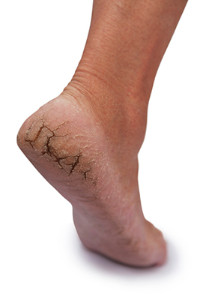 Having cracked heels are a common foot condition that tends to appear during the summer months. This is mainly due to the increased flip-flop and sandal usage in warmer weather. In regards to cracked feet, studies have shown that “71 percent of women regularly suffer, while only 34 per cent of men are happy with the condition of their feet.” Cracked heels are often the result of a lack of elasticity in the skin, but there are ways you can avoid developing them. One of the most efficient ways to decrease your chances of getting cracked feet is to correct the way you walk. People who walk while putting a lot of pressure on their heels are more likely to develop cracks. Another simple way to prevent cracked heels is to moisturize. Foot balms can be used to prevent the skin on your feet from drying out.
Having cracked heels are a common foot condition that tends to appear during the summer months. This is mainly due to the increased flip-flop and sandal usage in warmer weather. In regards to cracked feet, studies have shown that “71 percent of women regularly suffer, while only 34 per cent of men are happy with the condition of their feet.” Cracked heels are often the result of a lack of elasticity in the skin, but there are ways you can avoid developing them. One of the most efficient ways to decrease your chances of getting cracked feet is to correct the way you walk. People who walk while putting a lot of pressure on their heels are more likely to develop cracks. Another simple way to prevent cracked heels is to moisturize. Foot balms can be used to prevent the skin on your feet from drying out.
Cracked heels are unsightly and can cause further damage to your shoes and feet. If you have any concerns, contact one of our podiatrists from Pennsylvania. Our doctors can provide the care you need to keep you pain-free and on your feet.
Cracked Heels
Cracked heels appear unappealing and can make it harder for you walk around in sandals. Aside from looking unpleasant, cracked heels can also tear stockings, socks, and wear out your shoes. There are several methods to help restore a cracked heel and prevent further damage.
How Do You Get Them?
Dry skin is the number one culprit in creating cracked heels. Many athletes, walkers, joggers, and even swimmers suffer from cracked heels. Age and skin oil production play a role to getting cracked heels as well.
Promote Healing
Over the counter medicines can help, especially for those that need instant relief or who suffer from chronic dry feet.
Wear Socks – Wearing socks with medicated creams helps lock in moisture.
Moisturizers – Applying both day and night will help alleviate dryness which causes cracking.
Pumice Stones – These exfoliate and remove dead skin, which allows for smoother moisturizer application and better absorption into the skin.
Change in Diet
Eating healthy with a well-balanced diet will give the skin a fresh and radiant look. Your body responds to the kinds of food you ingest. Omega-3 fatty acids and zinc supplements can also revitalize skin tissue.
Most importantly, seek professional help if unsure how to proceed in treating cracked heels. A podiatrist will help you with any questions or information needed.
If you have any questions, please feel free to contact one of our offices located in Plymouth Meeting and Ambler, PA . We offer the newest diagnostic and treatment technologies for all your foot care needs.


